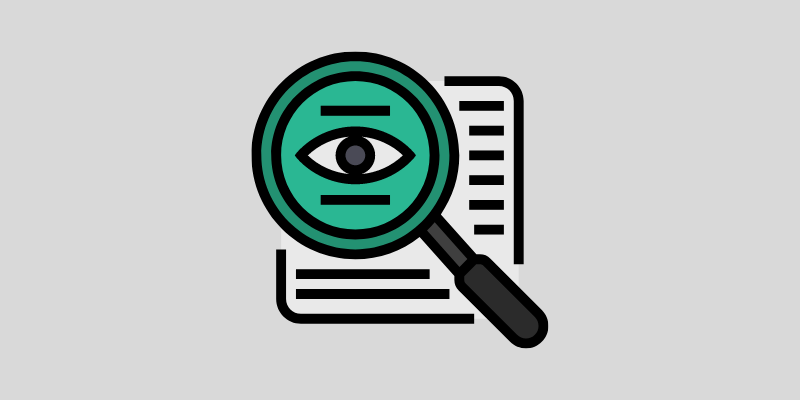Artificial Intelligence (AI) transforms how we live and perform daily tasks.
There’s no industry or sector left untouched when it comes to AI algorithms. Talk about healthcare, banking, retail, finance, security, transportation, education, and entertainment—you can see the applications of AI everywhere.
Statistics suggest that while the global AI market is worth $136.6 billion, it’s anticipated to reach a whopping $1.81 trillion by 2030.
While AI has a tremendous adoption among global organizations, how does it ensure its algorithms are fair and adhere to legal guidelines?
This is where AI governance comes into play.
In this blog, we’ll dive deep into AI governance. We’ll learn its meaning, principles, advantages, importance, and more. So, let’s get right into it.
What is AI Governance?
Artificial Intelligence governance or AI governance is the process of defining a set of regulations and policies to ensure that the AI and Machine Learning (ML) algorithms are developed with the aim of fair AI adoption for the people.
AI governance addresses various issues responsible for ensuring the ethical use of AI, including transparency, bias, privacy, accountability, and safety. So, any issues related to the misuse of AI or broken violations are addressed by AI governance.
The primary focus of AI governance is how it relates to justice, autonomy, and data quality. In addition, efficient AI governance requires collaboration between stakeholders, like government agencies, academic institutions, industry organizations, and civil society groups.
The goal is to address access and control to personal data and information and use AI in an ethical way that helps maximize profits and potential benefits and minimize harms, illegalities, and injustice.
AI governance framework can include the following:
- Developing codes of conduct and ethical guidelines for developers
- Establishing mechanisms to evaluate the social and economic impact of AI
- Creating regulatory frameworks for ensuring the safe and reliable use of AI
Thus, when done right, AI governance promotes and empowers organizations to function with complete trust and agility instead of slowing them down.
Key Principles of AI Governance
AI governance aims to protect organizations and companies using AI solutions in emerging software and technologies and their customers using these AI technologies.
And it does this by creating a guide or a regulatory policy for organizations to follow to promote the use of ethical AI.
Here are the core principles governing AI governance.
#1. Have Empathy

It’s critical to design AI in such a way that it understands the social implications of how it responds and respects human emotions and feelings.
Not setting clearly defined boundaries and rules of what’s acceptable can result in a lack of empathy in AI technologies like bots—which might hurt human sentiments and affect the company’s reputation and credibility.
#2. Provide Transparency

Designing AI systems and certifying AI algorithms that clearly explain decision-making operations is essential to avoid customer dissatisfaction or disappointment and enable accountability and scrutiny.
Thus, companies must design algorithms that communicate AI policies on bias and offer a transparent explanation of when the problem occurs.
#3. Fairness and Non-Discrimination

AI systems can perpetuate existing discrimination and biases, intentionally or unintentionally. Hence, ensuring that AI systems don’t violate human rights related to religion, sex, gender, disability, or race is necessary so that it treats all humans fairly and equitably.
Thus, designing, developing, and deploying fair and non-discriminatory AI systems that ensure inclusiveness is essential and one of the key principles of AI governance.
#4. Control Bias
AI systems typically make all their decisions based on the goldmine of available data.
Hence, organizations must regulate their Machine Learning (ML) training data and evaluate its impact to detect bias that may be unintentionally present or introduced within the system.
#5. Establish Accountability
AI development and deployment should come with clear lines of accountability and responsibility for any adverse outcome resulting from their use.
Hence, it’s critical for companies using AI systems to establish accountability if there’s an issue with the quality or accuracy of the result generated from their AI systems.
#6. Ensure Safety and Reliability

AI systems can significantly impact people’s well-being. Hence, enabling safe and reliable AI systems that don’t harm individuals or society is essential.
Organizations must consider a range of factors, including data quality, system architecture, decision-making processes, algorithms, and more is critical to ensure reliability and safety in AI systems.
Why does AI Governance Matter?
AI comes with its own set of risks and limitations, and most times; AI systems don’t make the right decisions despite the model being trained correctly.
For instance, using AI raises critical social, legal, and ethical issues organizations must address.
Moreover, 76% of CEOs worry about the potential of skewed biases and the lack of transparency within the global AI market.
This is where AI governance plays a huge role in providing a framework that monitors and captures AI risks and ensures ethical and responsible AI deployment. Effective AI governance helps ensure transparency, fairness, and accountability within the AI systems that secure privacy, respect human rights, and promote reliability.
Thus, AI governance is needed to prevent intensional or unintentional AI exploitation and avoid financial, reputational, and regulatory hazards.
Different Layers of AI Governance
Breaking AI governance into different layers can benefit the seamless deployment of the rules.
However, no standard or single agreed-upon model defines the layers of AI governance, as different companies and organizations define these layers differently.
Nonetheless, here’s a common way multiple organizations set the AI governance layers:
- Legal and Regulatory Layer: This layer includes the creation, ideation, and enforcement of policies, standards, laws, and regulations that govern AI use deployment and development. Moreover, it also includes the social and ethical considerations that shape AI implementation.
- Technical Layer: This layer includes the AI system’s technical design and implementation, including concerns like cybersecurity, data quality, and algorithmic fairness.
- Organizational Layer: This layer typically includes the oversight and management of AI systems within organizations, including their use, development, and implementation. Moreover, this layer also addresses accountability, risk management, and transparency issues.
- International Layer: This involves collaborating and coordinating different countries and global organizations to develop common AI technology standards, norms, and regulations. Additionally, this layer also addresses issues related to geopolitical competition and tensions.
- Social Layer: This includes the social and cultural impact and use of AI systems, including education, human rights, privacy, equity, employment issues, and access to AI technologies.
While these layers aren’t necessarily distinct, they offer a collaborative and multidisciplinary approach involving stakeholders from different sectors to enable AI governance.
How to Measure AI Governance?
The lack of proper and accurate AI measurement and its systems can put organizations at tremendous risk.
To correctly manage and measure AI governance, it’s crucial for organizations to clearly define who’s accountable and responsible for ensuring AI governance.
Besides considering government-enforced laws and regulations, organizations must also take measures that help support their strategic decisions and day-to-day operations.
These measures include:
Security: The data feeds around the model security and usage in AI. Understanding the improper usage and tampering of AI environments and systems is essential.
Regulatory compliance: Another way of measuring AI governance is understanding how organizations comply with AI-related regulatory compliance, standards, and requirements. The measures include evaluating an organization’s adherence to security, privacy, and ethical guidelines.
Bias: In AI, bias refers to the distortions and systematic errors that can occur during the development of AI systems, which can lead to discriminatory outcomes. Measuring AI governance through bias includes evaluating the AI algorithm’s fairness, accessing the AI system’s decision-making processes, and evaluating the quality and representativeness of the training data sets.
Transparency: Transparency in AI refers to the degree to which the AI system’s inner workings and operations are open and understandable. Organizations can measure the transparency level at the deployment and development levels.
Audit: In AI, audit refers to the systematic and independent review of an organization’s AI systems, environments, policies, and procedures. Audits focus on various AI governance aspects, including evaluation of data management, bias mitigation, model development, algorithmic decision-making, privacy, and reviewing ethical documentation and ethical processes.
Accountability: In AI, accountability refers to the degree to which users, developers, and other stakeholders are held accountable and responsible for the AI system’s actions. It includes clarifying an individual’s responsibility and their role in using the AI systems. The mechanisms to evaluate accountability include oversight committees, liability frameworks, and ethical review boards.
Measuring AI governance is multifaceted, considering several factors, like transparency, fairness, accountability, security, bias, and compliance regulations.
The sooner these measurement facets are in place, the snooker organizations can incorporate them within the software, and the better they can evolve with the organization’s goals.
Benefits of AI Governance
AI governance allows organizations to completely leverage the benefits of AI while minimizing associated risks and costs.
Here are the critical benefits of AI governance:
#1. Ensures Responsible Use of AI
AI governance ensures that organizations develop and use AI systems in a transparent, ethical, and accountable way. This responsible and ethical use of AI help promotes public trust within the AI systems and technologies and combat its negative impact.
#2. Improved Efficiency

Well-governed AI systems help promote and improve productivity and efficiency by automating redundant tasks, enhancing decision-making, and minimizing the scope of errors.
#3. Improved Equity and Decision-Making

Better access to the data in AI governance help promote fairness and equity in data collection, helping make accurate predictions and preventing risks of biased outcomes.
#4. Fosters Participation and Collaboration
AI governance significantly facilitates participation and collaboration amongst several stakeholders, like government, industry, civil society, and academia professionals. It helps promote a shared understanding of the AI advantages and develop common solutions to AI risks and challenges.
Challenges in AI Governance
While effectively ensuring ethical AI systems, AI governance faces many challenges.
It’s essential to address the challenges of AI governance to attain long-term benefits. These challenges are:
- Discrimination and Bias: If trained on partial data, AI systems can get highly susceptible to bias and discrimination—if designed without considering diverse perspectives. It’s critical to address the issue of partial decision-making and bias within the AI models to avoid discriminatory and unfair outcomes.
- Lack of Accountability: Many AI systems are difficult to understand, making holding them responsible for their outcomes and decisions challenging. It’s essential to make the AI systems adhere to transparency and accountability to promote a better understanding of how organizations use data for decision-making.
- Limited Resources and Expertise: Effective development and implementation of AI governance and its policies require significant professional expertise and resources, which can be challenging for smaller companies and organizations.
- Rapidly Changing Technologies: The rapidly changing AI technology can make it challenging for AI governance to maintain pace with the evolving technologies and combat emerging risks.
Learning Resources
#1. Introduction to AI Governance
This Udemy course on Introduction to AI Governance is perfect if you want to learn the basics and introduce yourself to AI governance concepts.
It comprises 1.5 hours of on-demand lecture videos and eight downloadable resources that help you understand how to monitor, measure, and control your organization’s AI-based models.
#2. AI Strategy and Governance
This course on AI Strategy and Governance by Coursera lets you discover and understand different AI strategies used in business transformation and various tools you can use to minimize the barriers to using AI and gain a competitive advantage.

It’s a beginner-friendly course to learn everything you must know about AI governance and strategies from the top instructors from the University of Pennsylvania.
#3. Artificial Intelligence (AI) Governance and Cyber-Security
If courses aren’t your thing, this AI governance and cybersecurity book on Amazon is perfect for learning about the unique risks created by AI systems, creating an AI governance framework to mitigate these risks, and different cybersecurity risks associated with AI systems.
It further explores tips on creating a cybersecurity framework for identifying and mitigating AI risks and skills required to perform a security review of the AI systems. You don’t need advanced statistics or programming skills to learn this book’s concepts and easily apply them in your organization’s AI environments.
#4. Strategy, Policy, Practice, and Governance for AI in Higher Education Institutions
If you’re pursuing higher education and want to learn about AI governance concepts and the best security and policy practices, this book on Amazon is the right one.
It covers topics like Artificial Intelligence ethics, postsecondary administrative leadership, and energy efficiency, an excellent resource for data scientists, IT professionals, researchers, and higher education professionals.
Final Words
AI governance helps organizations maximize AI benefits and minimize risks and associated costs.
Establishing clear guidelines, ethical frameworks, and regulations to ensure fairness and security within AI systems is crucial. This blog helps you understand the concept of AI governance, its significance, benefits, applications, and challenges.
So, if you want to enable ethical, fair, and unbiased AI systems, ensure to implement an AI governance framework within your organization.
Next, you can check out the top in-demand skills required for AI professionals.
Si quiere puede hacernos una donación por el trabajo que hacemos, lo apreciaremos mucho.
Direcciones de Billetera:
- BTC: 14xsuQRtT3Abek4zgDWZxJXs9VRdwxyPUS
- USDT: TQmV9FyrcpeaZMro3M1yeEHnNjv7xKZDNe
- BNB: 0x2fdb9034507b6d505d351a6f59d877040d0edb0f
- DOGE: D5SZesmFQGYVkE5trYYLF8hNPBgXgYcmrx
También puede seguirnos en nuestras Redes sociales para mantenerse al tanto de los últimos post de la web:
- Telegram
Disclaimer: En Cryptoshitcompra.com no nos hacemos responsables de ninguna inversión de ningún visitante, nosotros simplemente damos información sobre Tokens, juegos NFT y criptomonedas, no recomendamos inversiones

